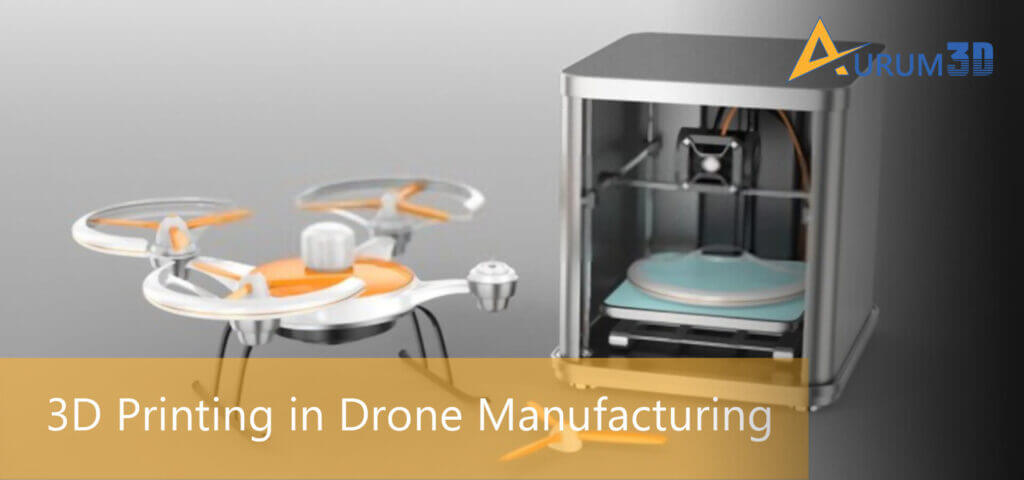As unpiloted or unmanned aerial vehicles, drones these days perform a wide variety of activities as flying robots. Leading ecommerce companies already use small drones to deliver lightweight packages to customers in about 30 minutes. At the same time, the military uses complex drones in situations when manned flights become extremely risky and difficult. That is why; enterprises from various sectors these days need customized and sophisticated drones to cater to their precise needs.
According to a report published by Goldman Sachs,
“Like the internet and GPS before them, drones are evolving beyond their military origin to become powerful business tools. They’ve already made the leap to the consumer market, and now they’re being put to work in commercial and civil government applications from firefighting to farming. That’s creating a market opportunity that’s too large to ignore.”
Manufacturers these days produce drones of varying sizes and types. Also, they have to manufacture drones with advanced and out-of-box features for various purposes. 3D printing technologies help drone manufacturers to curtail the time and resources required to produce new drone models. Also, most manufacturers leverage additive manufacturing to improve the drone manufacturing process. We can understand the applications of 3D printing in drone manufacturing based on a slew of use cases.
Use Cases Depicting the Huge Role Played by 3D Printing in Drone Manufacturing
Accelerating Drone Manufacturing and Customization
The drones produced by manufacturers can be broadly divided into three categories – fixed-wing, single rotor, and multirotor. But the engineers have to customize and finetune each category of drones according to specific use cases. 3D printing makes it easier for manufacturers to develop, customize, and deliver custom drones according to varied business requirements.
A company can combine the appropriate 3D printer and 3D printing filament to deliver a variety of unmanned aerial vehicles – delivery drones, photography drones, helicopter drones, GPS drones, and helicopter drones – without increasing production time and cost. The engineers can create custom drones simply by assembling a slew of 3D-printed parts and adding a variety of 3D-printed accessories.
3D Printing Most Parts and Components
Unlike conventional manufacturing, 3D printing helps drone manufacturers to curtail both production costs and delivery time. Engineers can have the option to use different 3D printing technologies and experiment with different 3D printing filaments according to precise requirements and use cases.
Also, they can combine the appropriate 3D printer and filament to produce many parts and components of a drone – frame, propeller, antenna holder, landing gear, and protective equipment. Hence, they can deliver tailor-made drones in a short amount of time simply by assembling these 3D-printed parts and accessories.
Evaluating New Designs and Variants
3D printing technologies are widely used by enterprises from different sectors to facilitate rapid prototyping. The engineers can create prototypes physically and quickly based on digital 3D models. Also, they can modify and finetune the prototype simply by making changes to the digital 3D file. The engineers further boost the drone’s design structure by experimenting with a wide range of 3D printing filaments. That is why; rapid prototyping or new design evaluation is one of the common use cases of 3D printing in the drone manufacturing process.
Conveying New Design Ideas
The exemptions granted by the Federal Aviation Administration (FAA) create opportunities for businesses to use drone technologies for new and different purposes. That is why; manufacturers have to showcase and convey design ideas to clients before producing a new drone model. 3D printers enable engineers to deliver scale models with high precision, complex geometries, and high details. The 3D-printed scale models help clients and manufacturers to evaluate the scale models elaborately and identify real-time issues.
Increasing Drones’ Performance
Weight is one of the key factors that affect a drone’s functionality and performance directly. Most enterprises these days use small drones. They explore ways to extend the drone’s flight time by reducing its weight. The manufacturers have to impress clients by reducing the overall weight of the drones by using lightweight components. 3D printing makes it easier for engineers to reduce the weight of various components of a drone by optimizing its design structure, facilitating rapid prototyping, and experimenting with various filaments.
Upgrading and Revamping Existing Drones
In addition to developing new drone models, manufacturers have to upgrade existing drone models by adding new features and improving performance. The conventional manufacturing techniques make existing drone design modification and iteration an expensive process. But engineers can use the appropriate 3D printing machines to produce and evaluate multiple and updated versions of the drone design without escalating cost or time. They can further make drone design iteration an ongoing process by evaluating and fine-tuning 3D-printed parts frequently.
Delivering Spare Parts on Demand
The rapid adaption and new use cases of drone technology make it essential for manufacturers to deliver spare parts on demand. While using conventional manufacturing processes, manufacturers rely on supply chains to deliver drone spare parts on demand. But 3D printing enables engineers to produce and deliver specific parts or components of a drone on demand. Engineers can use a 3D printer to print and deliver the required spare part to a customer in a few hours based on the existing digital 3D model.
Meeting Standards and Obtaining Certification
Most enterprises these days use drones for various purposes. Hence, the number of drones flying in confiscated areas will increase drastically in the near future. While designing and producing new drone models, manufacturers have to impress clients by meeting preset qualifying standards and obtaining quality certifications. 3D printing technologies help engineers to evaluate drones based on predefined quality standards and requirements. Also, they can fine-tune the drones in a short amount of time to obtain the appropriate quality certification early.
Conclusion
The Federal Aviation Administration (FAA) has been allowing businesses to use drones for varying purposes by granting exemptions. The exemptions will continue to create new use cases for drone technologies across industries. The drone manufacturers will leverage 3D printing technologies to design and produce innovative and customized unmanned aerial vehicles. The real-world applications and use cases will keep changing the importance and applications of 3D printing in drone manufacturing in the near future.
About Aurum3D
We are amongst the major 3D printing service providers in Bangalore, India. We have been providing CAD modeling service, rapid prototyping services and custom 3D Printing services to many major industries including Drone manufacturing industries. Please feel free to get in touch with us for your custom needs, our 3D printing solutions experts will get back to you within one business day.

